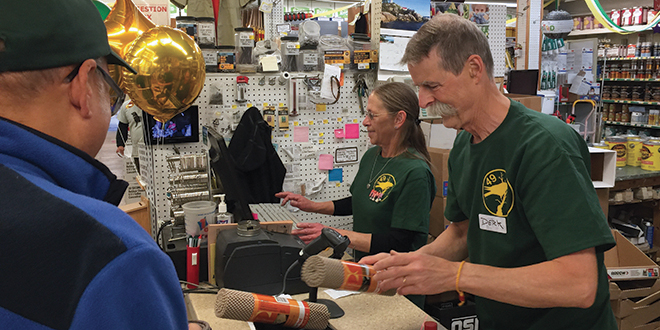The associates who interact with your customers on the salesfloor, offer their advice on products and projects and keep a store running are the lifeblood of the home improvement industry. To reward employees who contribute to sales growth, Island Hardware & Supply uses a program for its employees to share in the store’s profits.
Paul Garwood took over operations at Island Hardware & Supply in the early 1990s, and turned the Eastsound, Washington, business into a one-stop community store that offers anything from hardlines to deli sandwiches. In 2002, he began sharing of the business’s profits with employees. The amount of profits shared fluctuates, but employees have job security in their base pay. In 2009, a down year for the industry, the business shared 99 percent of its small profits.
“The program is a way to show employees that you believe in them and that their efforts help the business thrive,” Garwood says.
Though semi-retired, he determines how profits are shared each month along with his managers.
Island Hardware & Supply currently has 15 total employees, including three managers. However, Garwood is quick to point out that by having a profit-sharing program in place, each employee plays a greater role in the success of the business.

The business currently pays $12 an hour to all nonmanagers, with profit-sharing varying throughout the year based on seasonal sales and profits. During more profitable seasons, it isn’t uncommon to see high-performing employees earning another $18 per hour on top of their normal wage, Garwood says, and in slower seasons, the employees can still rely on their base pay.
Managers have slightly higher base salaries of $15 an hour. Depending on their performance, they receive a larger share of the profits.
A key for retailers looking to institute a similar program is having high buy-in from employees, Garwood says. His first focus when implementing the program was to make sure employees saw it as an incentive. Profits are added to an employee’s base pay, which remains consistent and can be relied on even during low-profit seasons. Pay is not cut or withheld based on performance reviews.
“We started this program to share in the store’s success. Everyone now has skin in the game. We have some of the best, highest-performing employees in the business. One of our employees is worth two or three big-box associates with their knowledge and what they can get done in a day,” Garwood says. “When a customer sees that, and sees that they can get a better deal at our store while being helped by such great employees, it only builds
the business.”

Paul Garwood
Island Hardware & Supply
Eastsound, Washington
Problem Resolved
Garwood wanted to step back from the business’s daily operations and wanted to compensate employees for their hard work and keep incentives high for extra effort. He froze his employees’ wages and instituted a profit-sharing program that can double the take-home pay of a high-performing employee. The store has consistently seen annual sales over $7 million since the program started.
Key Takeaway
“For our employees, the job comes down to 50 percent attitude and 50 percent job skills. We can teach you the job skills, but the attitude has to come from the individual. Our program is a tangible way to show what can be achieved with the right attitude. I’ve never had an employee complain about profit-sharing in 17 years,” Garwood says.
Future Plans
Island Hardware & Supply updates its profit-sharing program based on annual sales and the overall economic environment, but the basic tenets of the program will continue as long as the store can make a profit and compensate its employees accordingly.
 Hardware Retailing The Industry's Source for Insights and Information
Hardware Retailing The Industry's Source for Insights and Information








